8 start with F start with F
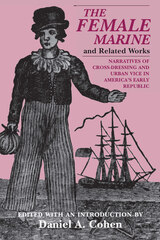
The alternately racy and moralistic narrative recounts the adventures of a young woman from rural Massachusetts who is seduced by a false-hearted lover, flees to Boston, and is entrapped in a brothel. She eventually escapes by disguising herself as a man and serves with distinction on board the U.S. frigate Constitution during the War of 1812. After subsequent onshore adventures in and out of male dress, she is happily married to a wealthy New York gentleman.
In his introduction, Daniel A. Cohen situates the story in both its literary and historical contexts. He explains how the tale draws upon a number of popular Anglo-American literary genres, including the female warrior narrative, the sentimental novel, and the urban exposé. He then explores how The Female Marine reflects early-nineteenth-century anxieties concerning changing gender norms, the expansion of urban prostitution, the growth of Boston's African American community, and feelings of guilt aroused by New England's notoriously unpatriotic activities during the War of 1812.
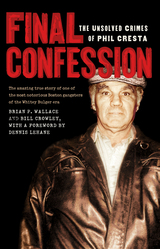
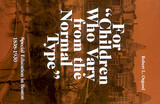
For “Children Who Vary from the Normal Type” describes the growth of Boston and its educational system during this period, then examines closely the emergence of individual programs that catered to students formally identified as having special needs: intermediate schools and ungraded classes; three separate programs for students with children; special classes for mentally retarded children; and other programs established between 1908 and 1913. Osgood describes these programs and their relations with each other, and also the rationales offered for their establishment and support. This detailed examination graphically depicts how patterns of integration and segregation in special education shifted over time in Boston, and provides a foundation for continuing the present-day discussion of the politics and realities of inclusion.
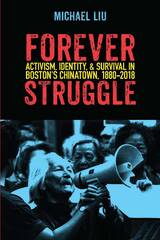
In writing about Boston Chinatown's long history, Michael Liu, a lifelong activist and scholar of the community, charts its journey and efforts for survival—from its emergence during a time of immigration and deep xenophobia to the highway construction and urban renewal projects that threatened the neighborhood after World War II to its more recent efforts to keep commercial developers at bay. At the ground level, Liu depicts its people, organizations, internal battles, and varied and complex strategies against land-taking by outside institutions and public authorities. The documented courage, resilience, and ingenuity of this low-income immigrant neighborhood of color have earned it a place amongst our urban narratives. Chinatown has much to teach us about neighborhood agency, the power of organizing, and the prospects of such neighborhoods in rapidly growing and changing cities.

Whether flying a kite in Franklin Park, gardening in the Fens, or jogging along the Riverway, today’s Bostonians are greatly indebted to the legacy of Frederick Law Olmsted. The man who dreamed of an “emerald necklace” of parks for Boston completed his plans in 1895, yet his invigorating influence shapes the city to this day, despite the encroachment of highways and urban sprawl. Cynthia Zaitzevsky’s book is the first fully illustrated account of Olmsted’s work: the process of “getting the plan” of a park, supervising its construction, adding the necessary “furniture” of bridges and other structures, and selecting plants, shrubs, and trees.
Frederick Law Olmsted’s stellar career in landscape architecture began with his design for Central Park in New York City. Public concern for open spaces led Boston to commission Olmsted to design peaceful “country parks” for the mental and physical refreshment of those who lived in the expanding city. He planned the system of five parks and connecting parkways extending out from the original Boston Common and Public Garden, as well as harbor and riverfront improvements—a vast set of projects involving 2,000 acres of open land. He and his firm also designed many smaller parks, playgrounds, and suburban subdivisions.
This book will be invaluable to anyone interested in landscape architecture, city planning, the history of Boston, or the nineteenth-century urban park movement and its current revival.
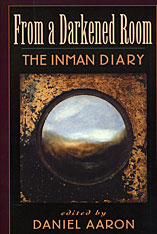
Only a few of us seek immortality, and fewer still by writing. But Arthur Inman challenged the odds. He calculated that if he kept a diary and spared no thoughts or actions, was entirely honest and open, and did not care about damage or harm to himself or others, he would succeed in gaining attention beyond the grave that he could not attain in life.
The diary became a many-layered and strikingly animated work of a gifted writer, by turns charming, repellent, shocking, cruel, and comical. But the diary is also an uninhibited history of his times, of his eccentricities and fantasies, of his bizarre marriage arrangements and sexual adventures. Inman’s explorations of his own troubled nature made him excessively curious about the secret lives of others. Like some ghostly doctor-priest, he chronicled their outpourings of head and heart as vividly as he did his own. The diary reads like a nonfiction novel as it moves inexorably toward disaster.
This is an abridged version of the celebrated two-volume work published by Harvard as The Inman Diary: A Public and Private Confession.
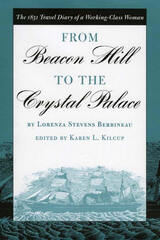
Because prior studies of American women’s travel writing have focused exclusively on middle-class and wealthy travelers, it has been difficult to assess the genre and its participants in a holistic fashion. One of the very few surviving working-class travel diaries, Lorenza Stevens Berbineau’s account provides readers with a unique perspective of a domestic servant in the wealthy Lowell family in Boston. Staying in luxurious hotels and caring for her young charge Eddie during her six-month grand tour, Berbineau wrote detailed and insightful entries about the people and places she saw.
Contributing to the traditions of women’s, diary, and travel literature from the perspective of a domestic servant, Berbineau's narrative reveals an arresting and intimate outlook on both her own life and the activities, places, and people she encounters. For example, she carefully records Europeans’ religious practices, working people and their behavior, and each region’s aesthetic qualities. Clearly writing in haste and with a pleasing freedom from the constraints of orthographic and stylistic convention, Berbineau offers a distinctive voice and a discerning perspective. Alert to nuances of social class, her narrative is as appealing and informative to today's readers as it no doubt was to her fellow domestics in the Lowell household.
Unobtrusively edited to retain as much as possible the individuality and texture of the author’s original manuscript, From Beacon Hill to the Crystal Palace offers readers brief framing summaries, informative endnotes, and a valuable introduction that analyzes Berbineau’s narrative in relation to gender and class issues and compares it to the published travel writing of her famous contemporary, Harriet Beecher Stowe.
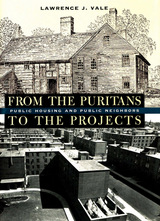
From the almshouses of seventeenth-century Puritans to the massive housing projects of the mid-twentieth century, the struggle over housing assistance in the United States has exposed a deep-seated ambivalence about the place of the urban poor. Lawrence J. Vale's groundbreaking book is both a comprehensive institutional history of public housing in Boston and a broader examination of the nature and extent of public obligation to house socially and economically marginal Americans during the past 350 years.
First, Vale highlights startling continuities both in the way housing assistance has been delivered to the American poor and in the policies used to reward the nonpoor. He traces the stormy history of the Boston Housing Authority, a saga of entrenched patronage and virulent racism tempered, and partially overcome, by the efforts of unyielding reformers. He explores the birth of public housing as a program intended to reward the upwardly mobile working poor, details its painful transformation into a system designed to cope with society's least advantaged, and questions current policy efforts aimed at returning to a system of rewards for responsible members of the working class. The troubled story of Boston public housing exposes the mixed motives and ideological complexity that have long characterized housing in America, from the Puritans to the projects.
READERS
Browse our collection.
PUBLISHERS
See BiblioVault's publisher services.
STUDENT SERVICES
Files for college accessibility offices.
UChicago Accessibility Resources
home | accessibility | search | about | contact us
BiblioVault ® 2001 - 2024
The University of Chicago Press









